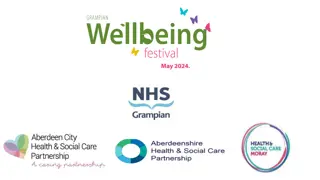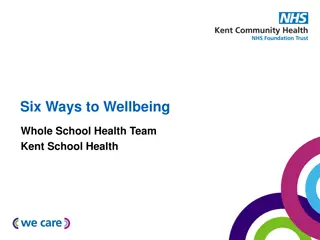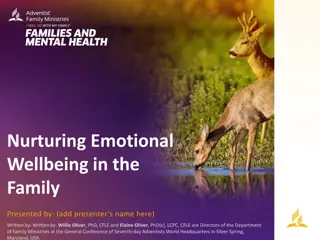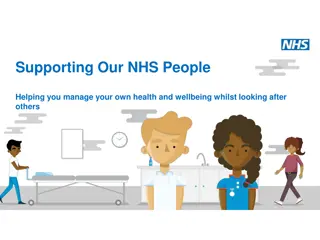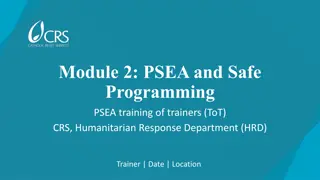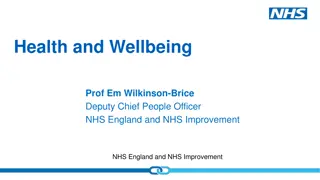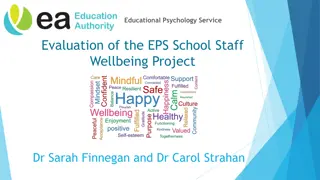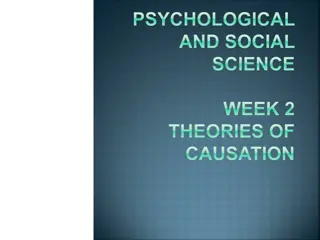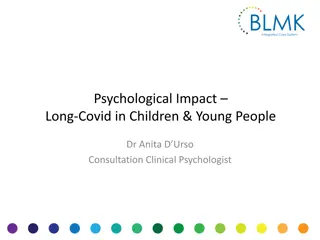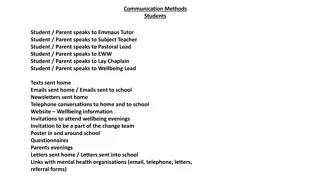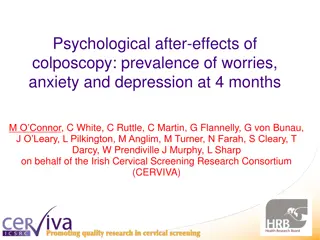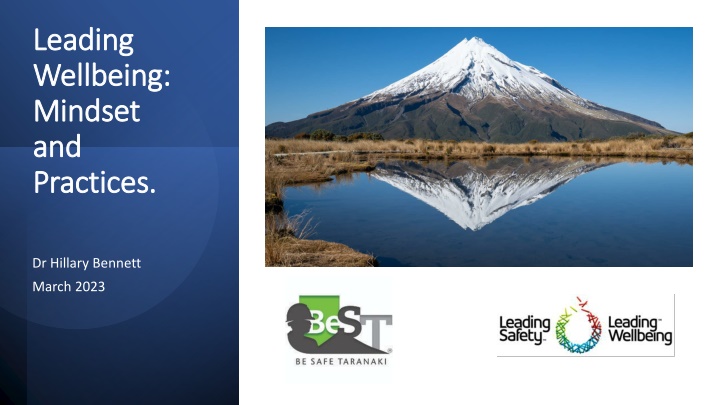
Understanding Psychological Safety in the Workplace
Explore the concept of psychological safety and its importance in fostering a workplace environment where individuals feel safe to take risks, share ideas, and contribute without fear of judgment. Learn how lack of psychological safety can impact employee behavior and hinder organizational growth.
Download Presentation

Please find below an Image/Link to download the presentation.
The content on the website is provided AS IS for your information and personal use only. It may not be sold, licensed, or shared on other websites without obtaining consent from the author. If you encounter any issues during the download, it is possible that the publisher has removed the file from their server.
You are allowed to download the files provided on this website for personal or commercial use, subject to the condition that they are used lawfully. All files are the property of their respective owners.
The content on the website is provided AS IS for your information and personal use only. It may not be sold, licensed, or shared on other websites without obtaining consent from the author.
E N D
Presentation Transcript
Leading Leading Wellbeing: Wellbeing: Mindset Mindset and and Practices. Practices. Dr Hillary Bennett March 2023
Mental Wellbeing Is Mental Wellbeing Is An individual s ongoing state which enables a person to thrive or not. On a continuum. Universal, subjective, dynamic and holistic. Reflection: Is your organisation s focus more on supporting workers who are struggling or unwell or enabling workers to thrive?
Psychological Safety Psychological Safety Mental Wellbeing and psychological safety are both important, but they are different. Currently a strong focus on psychological safety and its link to wellbeing. And for good reason as it is a protective factor of wellbeing. Research has shown psychological safety supports a sense of belonging, connection, and inclusion in a workplace and enables workers to thrive. It has also been linked to a range of positive organisational outcomes e.g., Increased reporting and learning Improved relationships at work Improved collaboration and knowledge sharing Improved engagement and more ..
What Is Psychological Safety? What Is Psychological Safety? The term was coined by Edgar Schein and Warren Bennis in 1965 as providing an atmosphere where one can take chances without fear and with sufficient protection . Popularised by Professor Amy Edmondson of Harvard Business School, who defined it as a shared belief amongst group members that the group is a safe place to take risks, admit mistakes, and learn new things . Psychological safety exists when people feel included and safe to learn, contribute, and challenge the status quo, without fear of being embarrassed, marginalised, or punished. (Clarke, 2019).
Psychological Safety Psychological Safety Is Not . Is Not . A shield from accountability. It s not niceness, coddling, consensus decision making, unearned autonomy, political correctness, or rhetorical reassurance. (Clarke, 2021) Wrapping people in cotton wool or political correctness, freedom to say whatever one likes or stay in your comfort zone.
Lack of Psychological Safety Lack of Psychological Safety Leads to people protecting themselves. They: Are reluctant to stand out Do not ask questions in meetings Provide general rather than specific feedback i.e., things are fine , it s all good . Keep silent i.e., not sharing their views openly Fear being wrong, so keep quiet Fearful of offending the boss or colleagues Hold back rather than share Are afraid of being embarrassed or looking bad Try to fit in and go along with the status quo
Leaders build psychological safety by creating the right climate, mindsets, and behaviors within their teams. Building psychological safety takes self awareness, focus and deliberate effort.
Psychological Safety: Not A Binary Concept Psychological Safety: Not A Binary Concept Note: All models are wrong, and some are useful. Clark (2020)
Psychological Safety: The Engine Not The Fuel Psychological Safety: The Engine Not The Fuel Antecedents Outcomes Psychological Safety Leadership mindset and practices Positive wellbeing Improved performance Team behaviours e.g., sharing skills, knowledge, seeking and sharing information Greater sharing of information A shared belief amongst group members that the group is a safe place to take risks, admit mistakes, and learn new things. Willingness to challenge unsafe conditions Consistent practice of empathy by everyone Less incidents High quality relationships Onboarding with intention Learning Clear roles Engagement Fair and consistent processes Creativity and innovation Just culture Honest, candid conversations
Leadership Mindset & Leadership Mindset & Practices Practices Mindset Everyone makes mistakes, so it s important we can admit, and learn, from them. Speaking up shows you re committed to a safe workplace. Everyone has a contribution to make. Practices Be curious, open-minded and invite diverse perspectives. Make sure everyone's voice is heard. Be willing to see things from other people's points of view and value their opinions, even if they differ from your own. Be modest about own capabilities and shortcomings, normalise I don t know . Promote responsible failure and learning from mistakes. Promote sincere dialogue and constructive debate. Be empathic. Speak less and listen more. Listen to understand, not to judge. Set explicit norms and expectations What do we expect from each other? What do we need from each other to get the work done? What needs to be in place to feel safe to speak up?
Leadership Mindset & Leadership Mindset & Practices Practices Challenge the status quo. What do we need to change? Ask genuine questions (i.e., invite people to have a voice). Make it more difficult to stay silent than speak up. Thank people for their contribution. Encourage dissent. What haven t we considered? Do you have any nagging questions? Who can give us a different opinion or suggestion that we haven t yet discussed? Who can poke holes in this idea for us? What could make this a bad idea? How would rate this idea on a scale of 10? If this idea is a 7, what could make it a 10? Don t put people on the spot. Sharing a view is being vulnerable. If someone is not ready to be vulnerable don t push them Ask for feedback and avoid being defensive when responding to questions or feedback.
A Critical Endeavour But No Easy Feat A Critical Endeavour But No Easy Feat Psychological safety is not a silver bullet. It doesn't just happen. It needs to be at the forefront of strategy. It requires courage and commitment to challenge the status quo and build a culture where people are willing to use their voice, knowing that there will not be negative consequences. It requires a shift in the mindset and practices of leaders and supportive organisational processes. It is a process and can be slow patience is important. Psychological safety isn t created overnight. It is delicate and dynamic. It s perishable, not permanent. It takes time and requires intention. It is not a substitute for effective psychosocial risk management. It is the foundation of good work design.
Leading Leading Wellbeing Wellbeing Leaders are the directors and actors in nurturing mentally healthy workplaces To enable workers to thrive, leaders need to build psychological safety To do this, they need to: Challenge their thinking and develop practices to create psychological safety Design work to support psychological safety.





